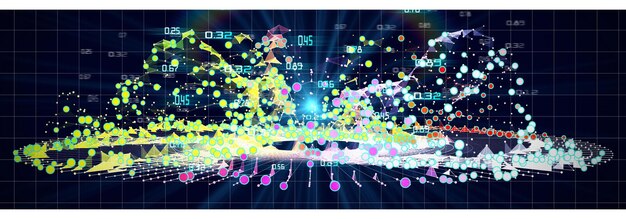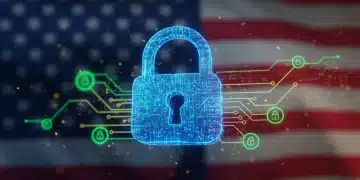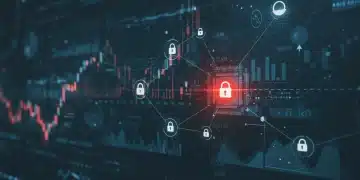SIEM: Monitoring and Analyzing Security Events in Real-Time

Security Information and Event Management (SIEM) systems provide real-time monitoring and analysis of security events, helping organizations detect and respond to threats effectively by aggregating and correlating data from various sources across their IT infrastructure.
In today’s complex threat landscape, organizations need robust solutions to detect and respond to security threats in real-time. Security Information and Event Management (SIEM) systems offer powerful capabilities for monitoring and analyzing security events, helping to safeguard valuable assets.
Understanding Security Information and Event Management (SIEM)
Security Information and Event Management (SIEM) combines security information management (SIM) and security event management (SEM) functionalities into a single system. This integration provides a comprehensive view of an organization’s security posture, enabling proactive threat detection and incident response.
Key Components of a SIEM System
A SIEM system comprises several key components that work together to collect, analyze, and report on security events.
- Data Collection: SIEM systems gather logs and event data from various sources, including servers, network devices, applications, and security tools.
- Data Normalization: Collected data is normalized into a consistent format, making it easier to analyze and correlate events from different sources.
- Correlation Engine: This component analyzes normalized data to identify patterns and anomalies that may indicate security threats.
- Alerting and Reporting: SIEM systems generate alerts when suspicious activities are detected and provide reports on security events and trends.
By integrating these components, SIEM systems provide a centralized platform for managing security information and events, enabling organizations to effectively monitor and respond to threats.

Benefits of Implementing a SIEM System
Implementing a SIEM system offers numerous benefits for organizations of all sizes.
- Enhanced Threat Detection: SIEM systems can detect a wide range of security threats that might otherwise go unnoticed.
- Improved Incident Response: By providing real-time alerts and detailed information about security events, SIEM systems enable faster and more effective incident response.
- Compliance: SIEM systems help organizations meet regulatory compliance requirements by providing detailed audit trails and reporting capabilities.
SIEM systems play a critical role in protecting organizations against cyber threats by providing comprehensive security monitoring and analysis.
In summary, SIEM systems combine SIM and SEM functionalities to provide a holistic view of an organization’s security landscape. This comprehensive approach enhances threat detection, improves incident response, and ensures compliance with regulatory requirements, making SIEM an essential component of any robust cybersecurity strategy.
Real-Time Monitoring with SIEM
Real-time monitoring is a crucial aspect of SIEM systems, enabling organizations to detect and respond to security threats as they occur. This capability is essential for minimizing the impact of security incidents and preventing data breaches.
Importance of Real-Time Threat Detection
Real-time threat detection allows organizations to identify and address security threats before they cause significant damage.
SIEM systems continuously monitor incoming data for patterns and anomalies that may indicate malicious activity. By analyzing events in real-time, organizations can quickly identify and respond to threats, reducing the potential for data loss and system damage.
Techniques for Real-Time Monitoring
SIEM systems employ various techniques for real-time monitoring.
- Threshold Monitoring: This technique involves setting thresholds for specific metrics and generating alerts when those thresholds are exceeded.
- Anomaly Detection: SIEM systems use machine learning algorithms to identify unusual patterns of activity that may indicate a security threat.
- Correlation Rules: These rules define specific conditions that trigger alerts when multiple events occur in a related sequence.
These techniques enable SIEM systems to provide comprehensive real-time monitoring, helping organizations stay ahead of potential threats.
In effect, real-time monitoring with SIEM systems is vital for quickly detecting and responding to security threats. By employing various monitoring techniques, organizations can ensure that they are promptly alerted to any suspicious activity, minimizing the impact of potential security incidents.
Analyzing Security Events with SIEM
Analyzing security events is a critical function of SIEM systems. By analyzing event data, organizations can gain insights into the nature and scope of security threats, enabling them to take appropriate action.
Log Management and Analysis
Log management involves collecting, storing, and analyzing log data from various sources.
SIEM systems centralize log data, making it easier to search, analyze, and report on security events. Log analysis helps organizations identify security incidents, track user activity, and investigate potential breaches.
Correlation and Aggregation
Correlation and aggregation are essential techniques for analyzing security events. Correlation involves identifying relationships between different events, while aggregation involves combining similar events to provide a more comprehensive view.
SIEM systems use correlation rules to identify complex attacks that involve multiple stages. By aggregating events, organizations can quickly identify patterns and trends that may indicate a security threat.

Incident Investigation and Forensics
SIEM systems provide tools for incident investigation and forensics.
- Event Timeline: SIEM systems create timelines of security events, making it easier to understand the sequence of events leading to an incident.
- Root Cause Analysis: These analysis help organizations identify the underlying causes of security incidents, enabling them to prevent future occurrences.
- Forensic Analysis: Tools for forensic analysis help organizations gather evidence and investigate the impact of security breaches.
Through effective log management, correlation, and aggregation, SIEM event analysis enables organizations to derive actionable insights, improving their ability to detect and respond to security incidents.
In short, analyzing security events with SIEM systems provides valuable insights into security threats. Through log management, correlation, and incident investigation, organizations can quickly identify and respond to security incidents, minimizing the impact of potential breaches.
Implementing a SIEM System
Implementing a SIEM system involves several critical steps, including planning, deployment, and configuration. A well-implemented SIEM system can significantly enhance an organization’s security posture, while a poorly implemented one may provide limited value.
Planning and Requirements Gathering
Before implementing a SIEM system, organizations should carefully plan and gather requirements.
This process involves identifying key stakeholders, defining security goals, and determining the specific data sources that need to be monitored. Organizations should also assess their existing security infrastructure and identify any gaps that need to be addressed.
Deployment and Configuration
Deploying a SIEM system involves installing the software and configuring it to collect and analyze data.
Organizations need to configure data sources, define correlation rules, and set up alerting mechanisms. It is also important to test the SIEM system to ensure that it is functioning correctly and generating accurate alerts.
Ongoing Maintenance and Optimization
Maintaining and optimizing a SIEM system is an ongoing process.
- Regular Updates: SIEM systems need to be regularly updated with the latest threat intelligence and security patches.
- Performance Monitoring: Monitoring the performance of the SIEM system ensures that it continues to function effectively.
- Rule Tuning: Tuning correlation rules helps to reduce false positives and improve the accuracy of alerts.
Effective implementation involves careful planning, configuration, and ongoing maintenance. By following these steps, organizations can ensure that their SIEM system provides maximum value and helps to protect against cyber threats.
In essence, proper implementation of a SIEM system, including thorough planning, careful deployment, and continuous maintenance, is critical for maximizing its effectiveness in detecting and responding to security threats. Ongoing maintenance and updates ensure the SIEM system continues to function at its best.
Best Practices for SIEM
To maximize the effectiveness of a SIEM system, organizations should follow several best practices. These practices cover various aspects of SIEM deployment and operation, ensuring that the system provides optimal security monitoring and analysis.
Define Clear Security Objectives
Organizations should define clear security objectives for their SIEM system.
These objectives should align with the organization’s overall security strategy and address specific threats and vulnerabilities. By defining clear objectives, organizations can ensure that their SIEM system is configured to meet their specific security needs.
Prioritize Data Sources
Not all data sources are equally important.
- Critical Systems: Focus on monitoring data from critical systems and applications that are most likely to be targeted by attackers.
- High-Value Assets: Prioritize monitoring data from systems that store high-value assets, such as sensitive customer data or intellectual property.
- External Threats: Prioritize monitoring data from external sources, such as firewalls and intrusion detection systems, to identify and respond to incoming threats.
Regularly Review and Update Correlation Rules
Correlation rules should be regularly reviewed and updated to reflect the latest threat landscape. Regularly reviewing correlation rules ensures appropriate and timely responses.
New threats emerge constantly, and correlation rules need to be adjusted to detect these new threats effectively. Organizations should also tune their correlation rules to reduce false positives and improve the accuracy of alerts.
Organizations that follow these practices, including establishing clear security objectives, prioritizing critical data sources, and continuously refining correlation rules, can optimize their SIEM deployment. This proactive approach not only ensures better threat detection but also improves the overall efficiency of the security operations.
The Future of SIEM
The future of SIEM is evolving rapidly, driven by advancements in technology and changes in the threat landscape. Emerging trends, such as artificial intelligence (AI) and cloud-based SIEM solutions, are shaping the future of security monitoring and analysis.
AI and Machine Learning in SIEM
AI and machine learning are playing an increasingly important role in SIEM.
These technologies can be used to automate tasks, improve threat detection, and reduce false positives. AI-powered SIEM systems can learn from past security events and predict future threats, enabling organizations to proactively address potential risks.
Cloud-Based SIEM Solutions
Cloud-based SIEM solutions offer several advantages over traditional on-premises systems.
- Scalability: Cloud-based SIEM systems can easily scale to accommodate growing data volumes and changing security needs.
- Cost-Effectiveness: These reduce the need for expensive hardware and software, making them more cost-effective for many organizations.
- Accessibility: Cloud-based SIEM systems can be accessed from anywhere, providing greater flexibility and convenience.
Cloud-based SIEM solutions are becoming increasingly popular as organizations look for ways to improve their security posture while reducing costs.
Integration with Threat Intelligence
Integrating SIEM systems with threat intelligence platforms enhances their ability to detect and respond to security threats.
Threat intelligence provides information about emerging threats, attack patterns, and threat actors. By integrating this information into their SIEM system, organizations can quickly identify and respond to new threats.
Together, these futuristic features—AI-driven automation, cloud-based scalability, and threat intelligence integration—promise to enhance SIEM capabilities. These improvements will allow organizations to tackle increasingly sophisticated cyber threats, ensuring stronger and more resilient security postures in the digital age.
| Key Point | Brief Description |
|---|---|
| 🛡️ Real-time Monitoring | Detect and respond to threats as they occur. |
| 🔍 Event Analysis | Gain insights into security incidents via log management. |
| ⚙️ SIEM Implementation | Careful planning, deployment, and maintenance are vital. |
| 🤖 AI in SIEM | AI enhances threat detection and automates tasks. |
FAQ
▼
The main purpose of a SIEM system is to provide real-time monitoring and analysis of security events, helping organizations detect and respond to threats quickly.
▼
SIEM improves incident response by providing detailed information about security events, enabling faster and more effective responses to potential security incidents.
▼
The key components of a SIEM system include data collection, normalization, correlation engine, and alerting and reporting functionalities.
▼
Log management is crucial because it centralizes log data, making it easier to search, analyze, and report on security events, aiding in identifying and investigating incidents.
▼
AI enhances SIEM by automating tasks, improving threat detection accuracy, and reducing false positives, leading to more efficient security operations.
Conclusion
Security Information and Event Management (SIEM) systems are essential tools for modern cybersecurity, offering real-time monitoring and analysis that helps organizations detect and respond to threats swiftly. By understanding the key components, implementation strategies, and future trends of SIEM, businesses can enhance their security posture and protect against evolving cyber threats.





